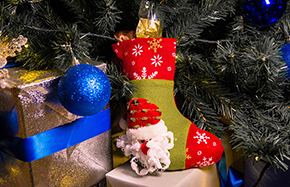Answering the old world versus new conundrum
The competition between new and old world wines continues in China. French, Spanish and Italian wines are by far the most popular, with 91 million liters of non-bulk imported wine coming from those countries last year - almost 62 percent of the total.
Only 24.5 million liters, or 23 percent of total imports, came from so-called "new world" nations like Australia and Chile.
Old world wines have an established reputation in China, especially those from France. The key question is whether they are value for money. A blind tasting among colleagues earlier this month aimed to investigate this question.
A group of 14 dedicated tasters from Australia, New Zealand, France, Spain, China, Germany and Scotland compared champagnes with new world sparkling wines, and then compared old world and new world pinot noirs. The results were fascinating but they can only be a snapshot of opinions. Results cannot be extrapolated to the entire population.
Three champagnes went up against a sparkling wine from Tasmania in Australia, and the panel was divided in its preferences.
Two of the non-vintage champagnes were from the budget end of the market, though at $40 and $47 a bottle I hesitate to use the term "budget". The Veuve Pelletier &Fils brut and the Henri de Verlaine brut were purchased from a supermarket. The group gave each 15.5 points out of 20, equivalent to a bronze medal.
The cheaper wine, the Veuve Pelletier & Fils brut, smelled of brioche and tasted of lemons and fresh bread, and was generally preferred ahead of its compatriot. The Henri de Verlaine had lovely grapefruit flavors but offered limited aromas. Both came from Epernay.
The third champagne was a non-vintage Piper-Heidsieck, available at a range of wine stores in China. It has great length and mouth-feel, with tiny bubbles and aromas of toast, vanilla and quince. It is a quality wine.
My favorite was the 1995 Stefano Lubiana Prestige, though at $125 a bottle it was slightly more than twice the price of the Piper-Heidsieck. It had intense aromas of fresh grapefruit, a zingy and almost mouth-watering acidity, and great length. The texture in the mouth is quite special. It is a wine to seek, though it would be difficult to find in China. The bottle was hand-delivered from Australia.
The panel gave both wines 18 out of 20, equivalent to a high silver. Wines need to get 18.5 to receive a gold medal.
We next compared pinot noirs from France, New Zealand and Australia. None of the panel liked the two 2006 French premier cru burgundies, even the French tasters in the group. I suspect the wines had been stored badly. They cost $65 each and quite frankly are not worth the money in the condition in which we found them. Buying French burgundy in China at the expensive end of the price spectrum is a gamble unless you know the wines have been stored properly.
The panel ranked the 2006 Peregrine pinot noir from Central Otago in New Zealand well ahead of the French wines. It is a dense black cherry in color, with a fine backbone of silky tannins, and tasted of plums, cherries, mocha and dark chocolate. It cost $45, and received a high silver.
The most cherished pinot was the 2008 Stefano Lubiana Sasso, from Tasmania. The color is dark cherry, followed by dark cherry and dark plum flavors and silky tannins, and a lingering perfumed finish. This wine could be cellared for a decade, but is drinking superbly already. It costs $90 but is worth every cent. Twelve of the 14 panel members rated this their top wine, giving it the only gold medal on the night.
These results do not answer the old world versus new world question, but they provided the panel with much to discuss. And isn't that what wine tasting is about?
















